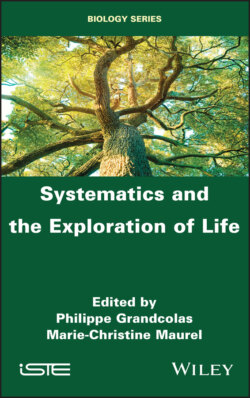Читать книгу Systematics and the Exploration of Life - Группа авторов - Страница 13
1
Symmetry of Shapes in Biology: from D’Arcy Thompson to Morphometrics 1.1. Introduction
ОглавлениеAny attentive observer of the morphological diversity of the living world quickly becomes convinced of the omnipresence of its multiple symmetries. From unicellular to multicellular organisms, most organic forms present an anatomical or morphological organization that often reflects, with remarkable precision, the expression of geometric principles of symmetry. The bilateral symmetry of lepidopteran wings, the rotational symmetry of starfish and flower corollas, the spiral symmetry of nautilus shells and goat horns, and the translational symmetry of myriapod segments are all eloquent examples (Figure 1.1).
Although the harmony that emanates from the symmetry of organic forms has inspired many artists, it has also fascinated generations of biologists wondering about the regulatory principles governing the development of these forms. This is the case for D’Arcy Thompson (1860–1948), for whom the organic expression of symmetries supported his vision of the role of physical forces and mathematical principles in the processes of morphogenesis and growth. D’Arcy Thompson’s work also foreshadowed the emergence of a science of forms (Gould 1971), one facet of which is a new branch of biometrics, morphometrics, which focuses on the quantitative description of shapes and the statistical analysis of their variations. Over the past two decades, morphometrics has developed a methodological framework for the analysis of symmetry. The study of symmetry is today at the heart of several research programs as an object of study in its own right, or as a property allowing developmental or evolutionary inferences. This chapter describes the morphometric characterization of symmetry and illustrates its applications in biology.
Figure 1.1. Diversity of symmetric patterns in the living world. For a color version of this figure, see www.iste.co.uk/grandcolas/systematics.zip
COMMENTARY ON FIGURE 1.1. – a) Centipede (C. Brena); b) corals (D. Caron); c) orchid (flowerweb); d) spiral aloe (J. Cripps); e) nautilus (CC BY 3.0); f) plumeria (D. Finney); g) Ulysses butterfly (K. Wothe/Minden Pictures); h) capri (P. Robles/Minden Pictures); i) Angraecum distichum (E. hunt); j) desmidiale (W. Van Egmond); k) diatom (S. Gschmeissner); l) sea turtle (T. Shultz); m) radiolarian (CC BY 3.0); n) starfish (P. Shaffner).
